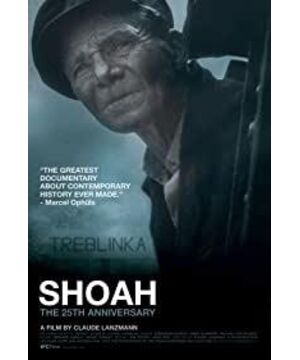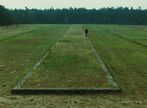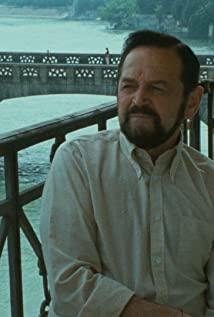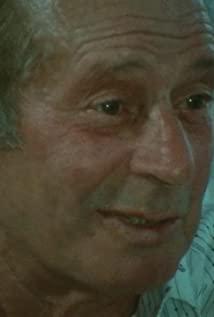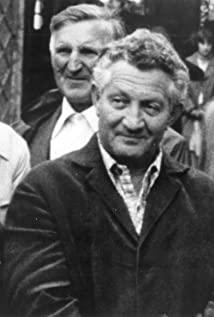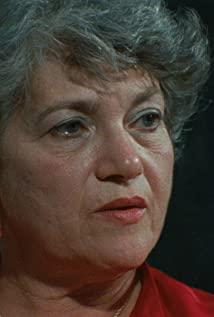Since the camera was first aimed at concentration camps in Europe, filmmakers have faced many challenges. How to respect history? And how to choose the most meaningful way to describe this atrocity? Although the narratives describing the Holocaust are meant to present real events, commemorative films are often more open and raise some deeper questions.
1. How did movies "witness" the Holocaust for decades?
In the commentary written 2015 film "Son of Saul" when (Son of Saul), Richard Brodie (Richard Brody, 1948, US film critic) by exploring director Neimei Shi Laszlo (László Nemes, In 1977, the Hungarian film director) told the story of a man trying to bury a child in Auschwitz concentration camp (Auschwitz). Several topics were raised on how to deal with the expressiveness of the film. The protagonist Sol is a member of the contingent (Sonderkommando, the prisoner detachment responsible for handling the dead in the Nazi German concentration camp), a special squad forced to assist in the genocide process, so he has a unique perspective in the concentration camp. The film portrays this perspective in an exhilarating, claustrophobic way, using the off-screen space as a means of suggestion rather than depiction of terror and violence. As Brody explained, this film attempts to get rid of the stereotypes of dehumanization in the past, while also using its unique framework to rethink the narratives of witnesses by giving the audience a near-real and narrow view. Brody wrote:
Nemes gave up a completely transparent way of expression-when filming Saul's experience and observations, the director could not completely rely on the actors' dramatic performances on the set. The magnitude of these events cannot be dramatized, but they cannot be avoided completely. However, the blurring of archive images suggests another way of transmission to the future. The events that Sol saw and the actions he took will be preserved through his final oral testimony-if in fact Sol can survive (no spoilers here).
Brody believes that although the film’s arguments are convincing , it is not sufficiently successful compared to Lanzman’s pivotal documentary film " Shoah " (Shoah, 1985). Because the latter focuses on testimony rather than archival footage. "Neimei Shen movie eased Lanzmann movie metaphysical radicalism (metaphysical radicalism), and the humane face of the existence of emptiness and moral paradox Lanzmann, Neimei Shen tells a not applicable to A story of ordinary etiquette in an elegant environment." "Son of Sol" involves the general view of Hollywood and its surroundings on the description of the Holocaust, and also considers the philosophical weight of thinkers like Lanzman. The representation of this form and the way it consolidates lies is critical. However, through the dramatic treatment of genocide, it can be said that "Son of Sol" solved many of the problems it was trying to solve.
The persuasive power of Hollywood has shaped our global understanding of the Holocaust on the screen, but this is by no means a definitive perspective. How to surpass and jump out of the framework built by witnesses? We need to focus on films that deal with testimony and memory, abandon those classic narrative forms, and replace them with more radical and challenging images.
2. How do Holocaust survivors testify in the film?
Death becomes the core of the director's vision. The length of the last film of his life reaches more than 9 hours, which implies a profound and insurmountable absence. In essence, "The Catastrophe" occupies a "radical contradiction" (radical contradiction) space, because "the dead cannot speak for the dead". The structure of the film is based on interviews and features contemporary footage of concentration camps and nearby villages. The film’s montage approach abandons chronological statements and adopts a structure that tends to be more reflective. This shows that the film cannot fully describe the extent of the genocide and challenges the view that the Holocaust is regarded as a past event. On the contrary, fear and trauma will always exist. Lanzman tried to bring these lost figures together and let them speak through the living. He will not prioritize the individual: "This film will take a strict form- Gestalt ( also known as Gestalt psychology) in German . One of the rationalist theories in psychology, Emphasize the integrity of experience and behavior) and tell the fate of the entire group." These interviewees also hope that their stories are not about survivors, but about the "dead", because "the survivors are also destined to die."
"Holocaust" challenges many images and concepts that usually appear in Holocaust movies, especially those rumors that European Jews are passive victims and even self-destructive accomplices. It also refutes the notion that the genocide was not noticed by outside countries until the liberation of the concentration camps. This film not only changed people's perceptions of the Holocaust, but also explored any philosophical issues related to the description of genocide on the screen. Although the overall approach is quite different, such as the historical fictional film " The Act of Killing " (2012), which challenges the preconceived notions of archival documentaries, can be understood as directly benefiting from "Hero". Rigorous form.
More than 30 years after the end of the Holocaust, and nearly 90 years after the beginning of World War II, the number of Holocaust survivors has been declining every day. This key text remains one of the most important documentaries of all time. In the past few decades, Lanzman has created several films with materials that have never been used before. However, he did not make a final conclusion on the Holocaust, but seemed to have just opened a more comprehensive discussion. As new first-hand information fades away, how does memory play a role in our understanding of the Holocaust in today’s movies?
3. After 75 years, how does the movie remember the Holocaust?
In the book "Liberated Audience", the philosopher Jacques Lancière discusses "The Catastrophe" and provides examples of other films and works of art that involve what he calls "unbearable images" " (Intolerable images) -an image that cannot be experienced without experiencing " pain and indignation ." They are also suspected for various reasons, but the most noteworthy is the background and scenes of the times. How can "intolerable images" persuade or show specific conditions of violence, rather than "universal madness of mankind," because the latter's views inspire indifference rather than action? Lancière believes that the assumption that the only witness does not want to testify and creates such an image, whether real or fictitious, indicates a desire to see something that should be unbearable. Movies like "Hero" bypass this problem by "using image lies to oppose image positions."
Another movie that Lancière cited is "S21 -The Khmer Rouge Killing Machine " (S-21: The Khmer Rouge Killing Machine, 2003). Director Pan Halliday (Rithy Panh, 1964, Cambodian documentary film director, screenwriter) adopted a similar approach with Lanzmann "on behalf of the perpetrators rather than the victim". However, what Pan Lide did differently was that he used archives and re-creation to illustrate the particularity of this genocide. The director believes that it is necessary to "treat these files as part of the system." These materials are not presented directly to survivors and perpetrators without comment, but to make them react. Therefore, we have not only seen how the killing machine works, but also how those involved in it feel about the situation at the moment.
Pan Lide discussed the importance of memory as a means of participation in his works. He said, "Memory must be a reference point. What I am looking for is understanding; I want to understand the nature of crime, not to build a fanatical memory. "Pan also wrote in his book " The Elimination " (The Elimination, 2012): "I admire the documentary of Claude Langz, which is based on the organization of speech and speech." The genius of "Holocaust" is that it allows viewers to see through the text. But I believe that speech can be awakened, amplified, and supported by documents that successfully escaped destruction."
Since these films represent a radical and philosophical intervention in memory and genocide, the true legacy of Holocaust films has a less noble history. In many ways, works like "Hero" and "S-21" run counter to how mainstream movies purify genocide into a pastime that suits the public's taste. Movies like "Schindler's List", although using classic Hollywood film production techniques and describing terrible violence, ultimately lack a comprehensive interpretation of genocide, which incorporates the complexity of human behavior into pre-sets. Established conventions, thereby helping to sublime the history of the Holocaust. Although certain aesthetic marks try to get rid of the sensationalism of grandstanding, works such as "Havoc" still satisfy the audience's curiosity without having to challenge the audience. They keep a certain distance from the audience, allowing the audience to become observers who can opt-out, or conversely, they can carefully study the most shameful details of people's lives and deaths without guilt. It is necessary to consider what kind of questions these films are asking the subject and the audience.
The concept of remembering became an important force in Holocaust movies, especially in movies describing genocide. How do we remember, and how to ensure that " Never again " (Never again) applies in a broader sense to combat contemporary genocide and the incentives that led to it? In what ways can art not only educate the audience, but also inspire the audience to rethink the relationship between man and death and their own guilt? Why do some genocide events in mainstream movies seem worthy of in-depth thinking, and some are not?
Welcome to follow my WeChat public account : ABAGo
View more about Shoah reviews


